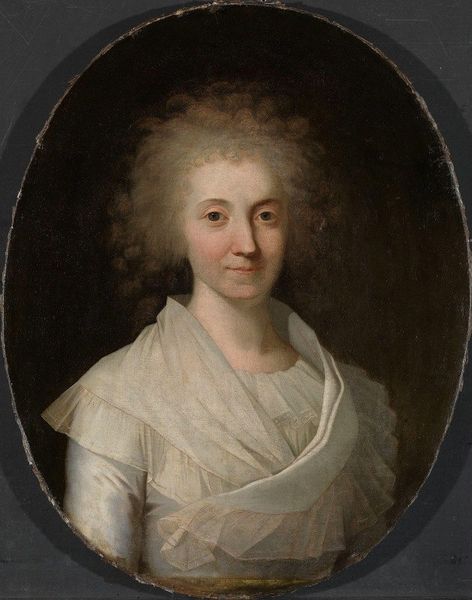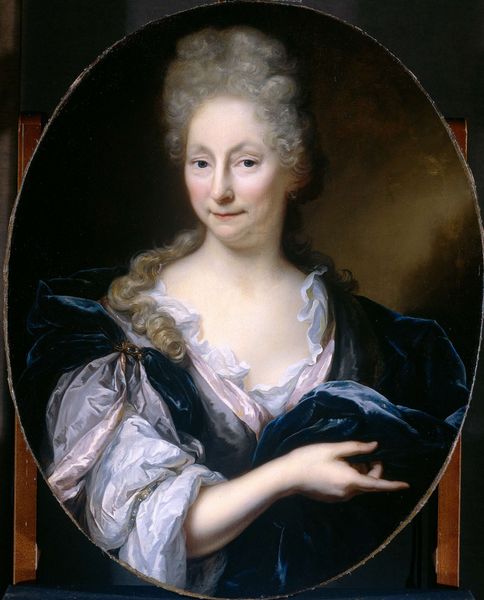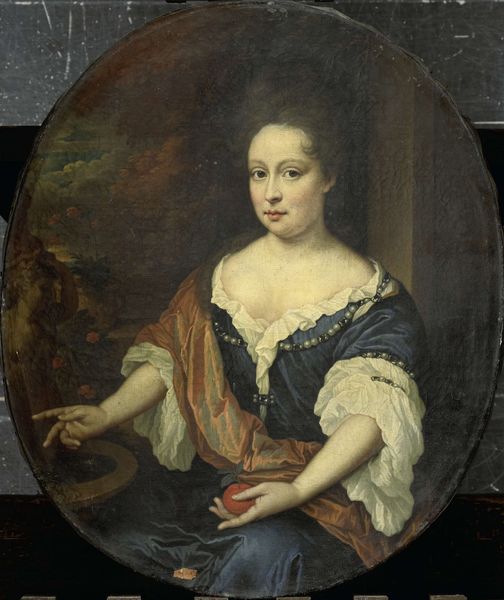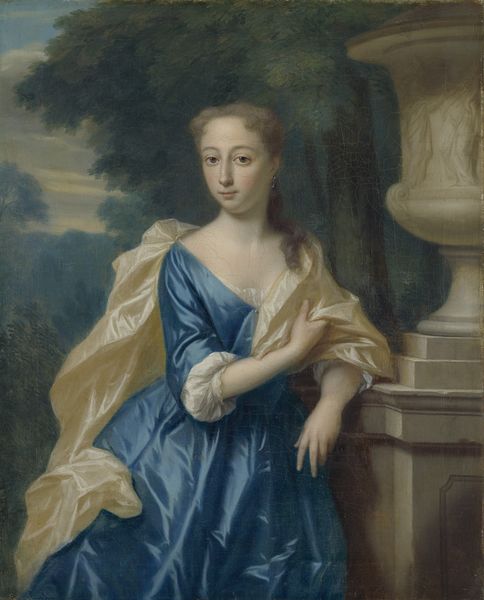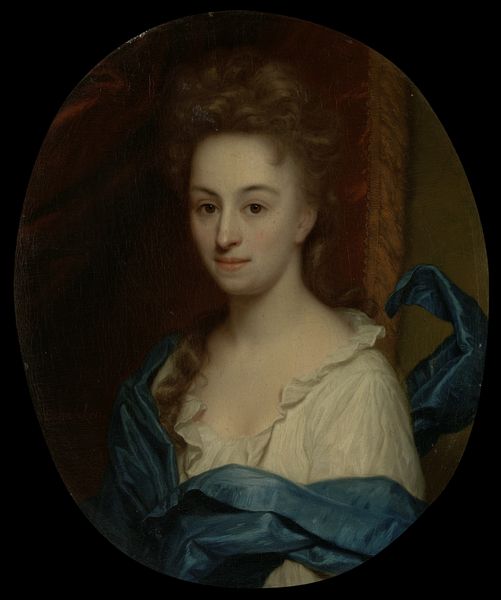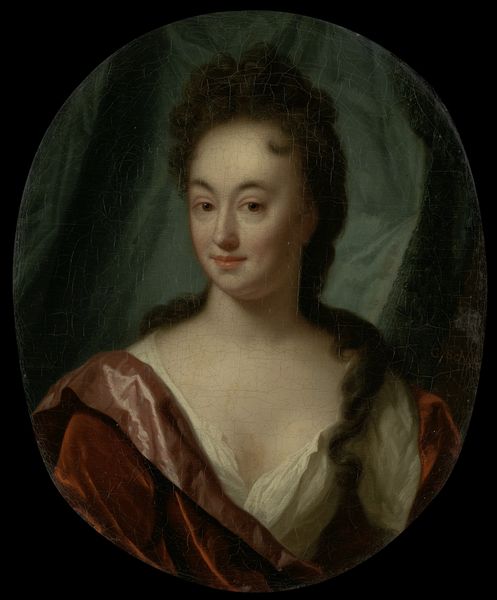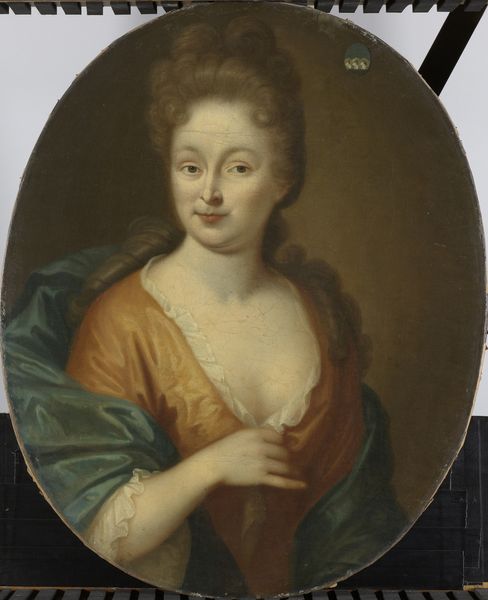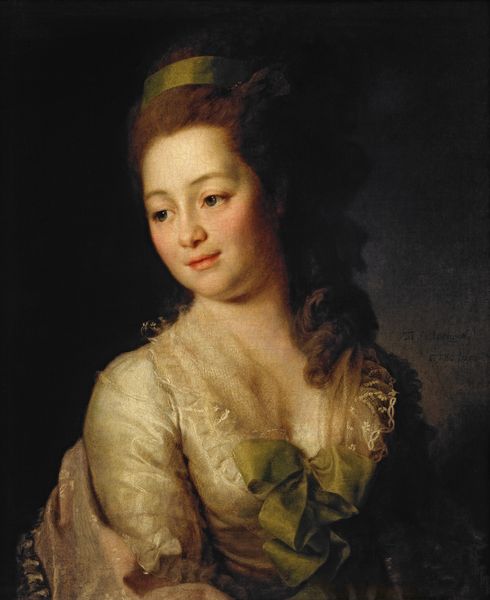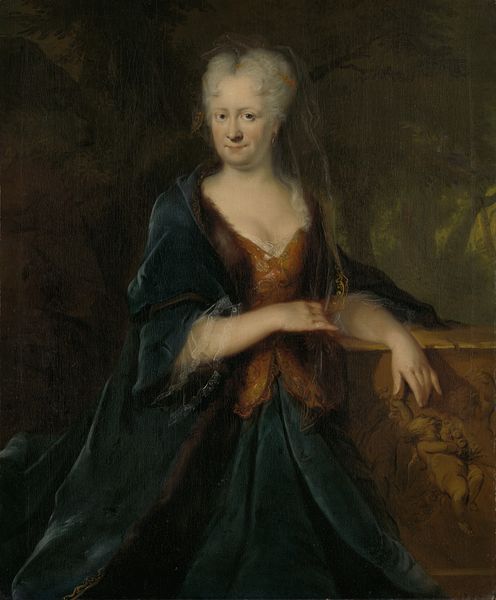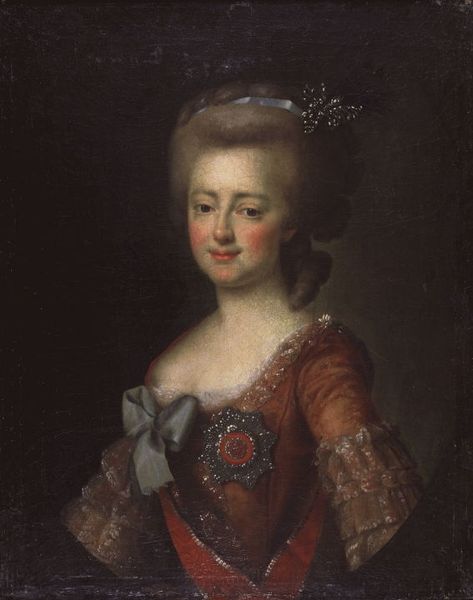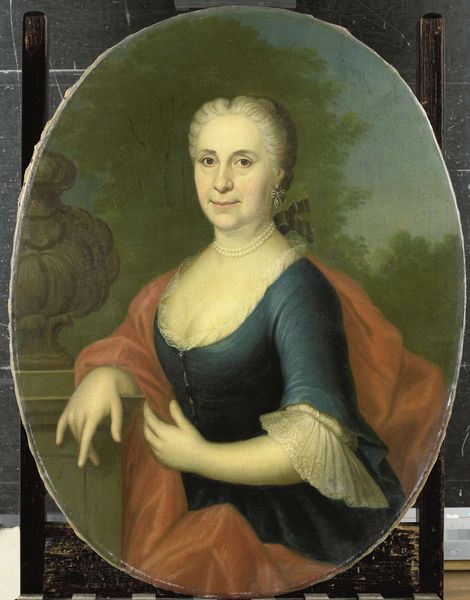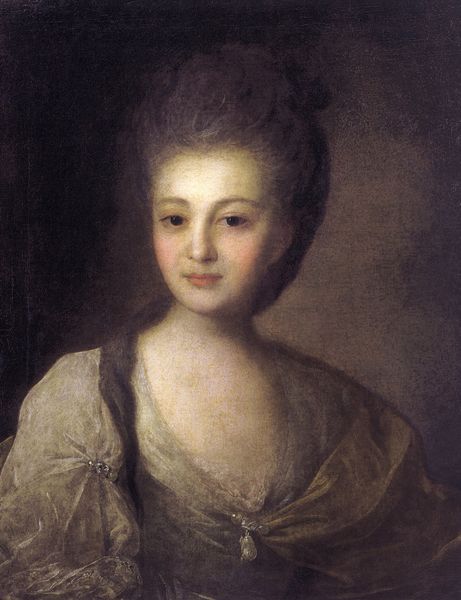
painting, oil-paint
#
portrait
#
baroque
#
painting
#
oil-paint
Dimensions: height 49.3 cm, width 41.4 cm, thickness 3.2 cm, depth 7.4 cm
Copyright: Rijks Museum: Open Domain
Curator: Here we have "Portrait of a Woman," an oil painting, created sometime between 1690 and 1729 and attributed to Arnold Boonen. Editor: The first thing I notice is the almost theatrical contrast of light and shadow, plunging most of the background into darkness, isolating the figure. Curator: Absolutely, a prime example of Baroque sensibilities. What interests me most is not just the subject’s likeness, but what the details—her clothes, the setting—tell us about her social position and perhaps her aspirations. Editor: Note the subtle shifts of color in her dress, a delicate ochre, accented by cool grey drapes. And that incredible lace detail at her neckline – the artist really paid attention to the materials and how light plays on texture. It draws the eye. Curator: Consider the woman’s pale skin set against the darkened background; her subtle gaze, and the placement of her hand resting delicately on what seems to be a jewelry box. Are we meant to understand something about beauty, artifice, or status through these signs? The gaze seems almost like an assessment, asking if she is meeting our standards or we are meeting hers? Editor: And she's placed slightly off center, with an arch in the background further pushing the viewer's eye back to her. It’s interesting that we read the dark background as secondary when it actually shapes and enhances our perception of the figure so dynamically. Curator: Precisely, these formal elements become essential for our interrogation into Baroque social structures, this piece operates within a complicated web of signifiers pertaining to female identity, wealth, and societal expectations in the late 17th and early 18th centuries. Editor: I concur. The artist seems hyperaware of composition. There’s a measured harmony in how light and shadow play with texture to pull the figure forward in space. Curator: I appreciate your keen eye, by carefully examining the portrait in conjunction with its socio-historical context, we gain access not only to the artistic techniques but to the values of the moment. Editor: Indeed. It's amazing how studying color and line can illuminate not only the composition, but a broader social dialogue, giving us different perspectives on one painted moment.
Comments
No comments
Be the first to comment and join the conversation on the ultimate creative platform.
